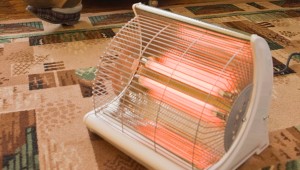HEATING DEVICES
Forgeable metals are heated either in a hearth or in a furnace. The hearths are widely used for heating the metals for carrying out hand forging operations.
Furnaces are also commonly used for heating metals for heavy forging. The forging job is always heated to the correct forging temperature in a hearth or in a furnace located near the forging arrangements.
Gas, oil or electric-resistance furnaces or induction heating classified as open or closed hearths can be used. Gas and oil are economical, easily controlled and mostly used as fuels. The formation of scale, due to the heating process especially on steel creates problems in forging. A non-oxidizing atmosphere should, therefore, be maintained for surface protection. Special gas-fired furnaces have been developed to reduce scaling to minimum. Electric heating is the most modern answer to tackle scaling and it heats the stock more uniformly also. In some cases, coal and anthracite, charcoal containing no sulphur and practically no ash are the chief solid fuels used in forging furnaces. Forge furnaces are built raise temperatures up to 1350°C in their working chambers. They should be sufficiently large to allow proper combustion of the fuel, and to obtain uniform heating of the forging jobs. Each heating furnace consists of parts including firebox, working chamber, chimney, flues, re-cuperator or regenerator, and various auxiliary arrangements.
Various types of furnaces are used for heating the metals and some of them are briefly described as under.
1 Box or batch type furnaces
These furnaces are the least expensive furnaces widely used in forging shops for heating small and medium size stock. There is a great variety of design of box-type furnaces, each differing in their location of their charging doors, firing devices and method, employed for .charging their products. These furnaces are usually constructed of a rectangular steel frame, lined with insulating and refractory bricks. One or more burners for gas or oil can be provided on the sides. The job-pieces are placed side by side in the furnace using a slot through a suitable tong. It is therefore sometimes called slot type furnace.
2 Rotary-hearth furnaces
These are set to rotate slowly so that the stock is red to the correct temperature during one rotation. These can be operated by gas or oil fuels.
3 Continuous or conveyor furnaces
These furnaces are of several types and are preferred for larger stock. They have an air or oil-operated cylinder to push stock end-to-end through a narrow furnace. The pieces are charged at one end, conveyed through the furnace and moved at other end at the correct temperature for the forging work.
4 Induction furnaces
These furnaces are very popular because induction greatly decreases scale formation and can often be operated by one person. The furnace requires less maintenance than oil or gas-fired furnaces. In induction furnaces the stocks are passed through induction coils in the furnaces.
Delivery to forging machine operator can be effected by slides or automatic handling equipment.
5 Resistance furnaces
These furnaces are faster than induction furnaces, and can be automated easily. In resistance heating furnace, the stock is connected to the circuit of a step-down transformer. Fixtures are also equipped along with furnace for holding different length, shape, and diameter of stock. However, the fixtures are often quite simple and can be adjusted to handle a family of parts.
6 Open fire and stock fire furnace
The fire itself plays an important part on the efficient heating of stock and it must be kept clean, free from excess dust or clinkers. Work which is laid on top of the fire will get hot underneath and remain colder on the top use it is exposed to the atmosphere, and uneven heating will result. In the same way, work which is red low in the fire but at the same time against the tuyre will become hot on one side, but will have a blast of clod air blowing against it, from the tuyre on the other side. The correct position for heating the job is in the hearth of the fire. The most common methods of firing in forging are namely open fire and stock fire which are discussed as under. Copied from A Basic Manufacturing Processes and Workshop Technology by Rajender Singh.
